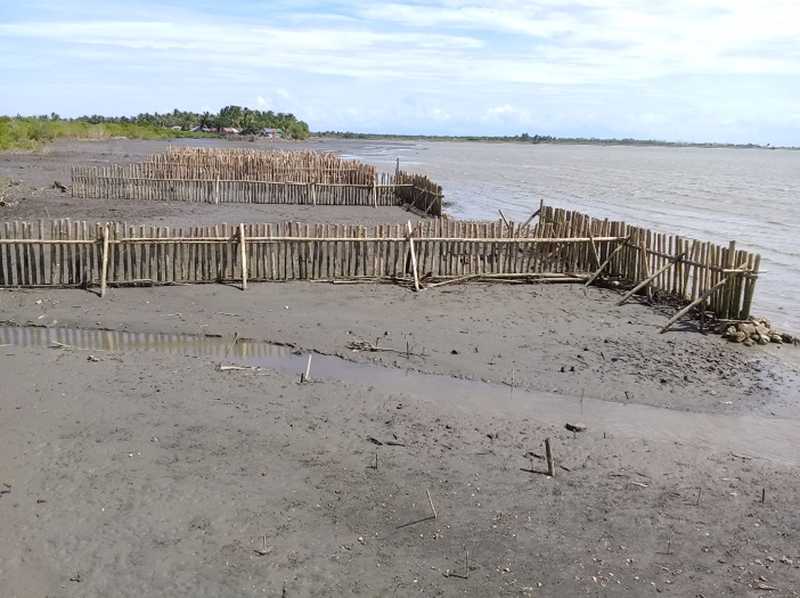
Case study: creativity in the face of adversity can make a difference. Faced with recurring coastal erosion, the town of Leganes in the Philippines decided to try the practice of ‘T-fence’. The T-fence was installed along the the coastline bordering the Katunggan Mangrove Ecopark in 2015 and 2016, and is designed to trap sediments, which create a strong and secure base for newly planted mangrove saplings.
Read more
Related articles for further reading
J.H. Primavera and R.J.A. Loma, ZSL (POSTED BY ZSL)
With more than 20 typhoons passing through the Philippines each year, the country needs healthy coastal habitats, especially mangroves, for storm protection. To date, most of the mangroves that line the country’s 36,000 km of coastline are gone or degraded and need urgent rehabilitation. The reality is that mangrove plantings often fail to take root because their habitat has changed. Often the elevation has become too low, wave actions too strong, and sediment too soft to support mangrove survival and growth.
But creativity in the face of adversity can make a difference. Faced with recurring coastal erosion, the town of Leganes in Iloilo decided to try the ‘T-fence’ which was inspired from a presentation by Dr. Klaus Schmitt from GIZ at the 2nd National Mangrove Conference (organized by ZSL-Philippines.) The so- called T-fence was installed along the Nabitasan-Gua-an coastline bordering the Katunggan Mangrove Ecopark in 2015 and 2016. The fence traps sediment which creates a strong and secure base for newly planted mangrove saplings.
As a case study, seedlings from the naturally occurring Avicennia marina mangrove trees were planted behind the fences by volunteers from both the military and business. This project has since expanded to the neighbouring village of Bigke. Once the mangrove fringe has been restored with the help of these fences, coastal populations and wide expanses of fishponds for which Leganes is known will be protected. In addition, more mangroves will help stabilize the climate.



